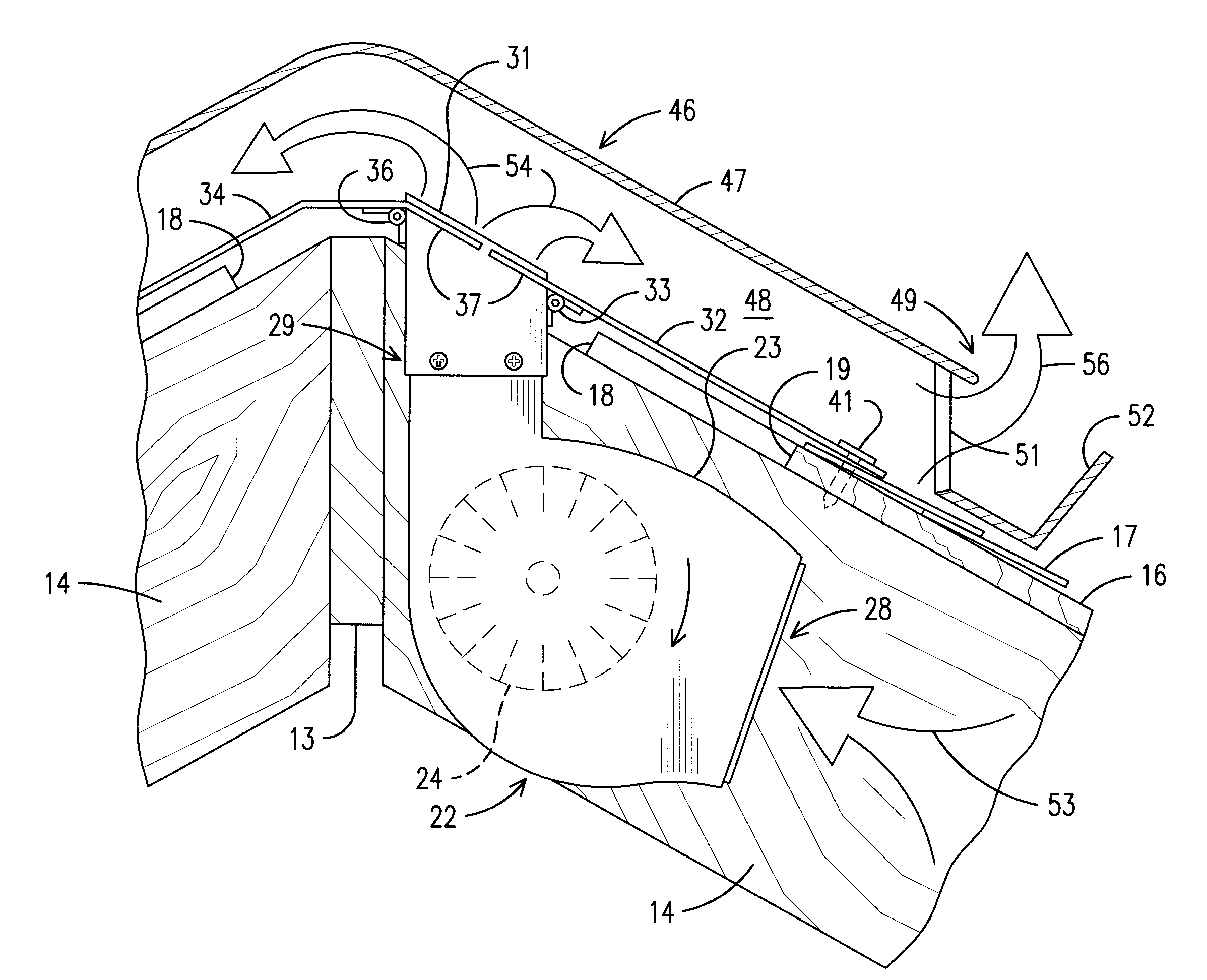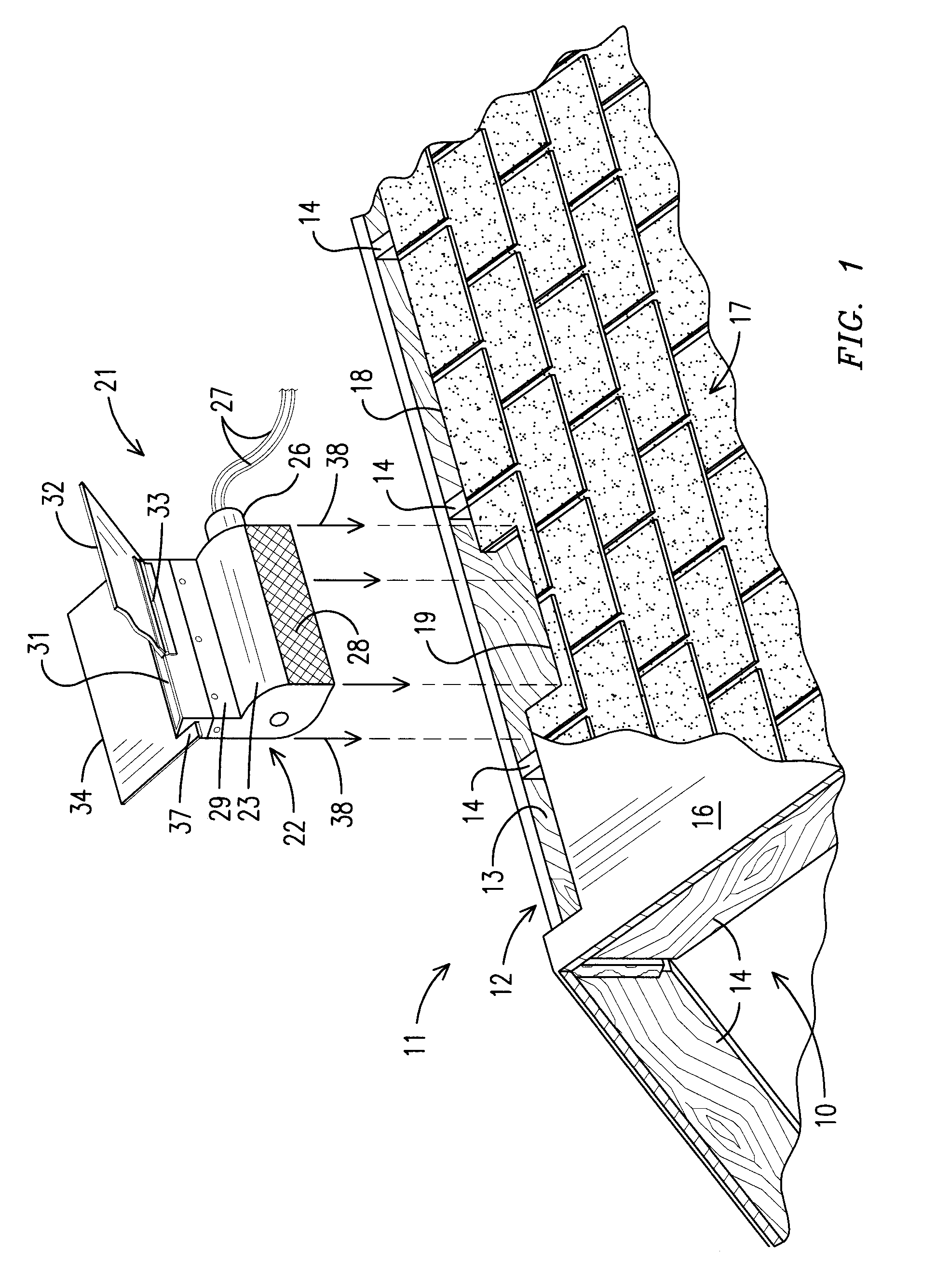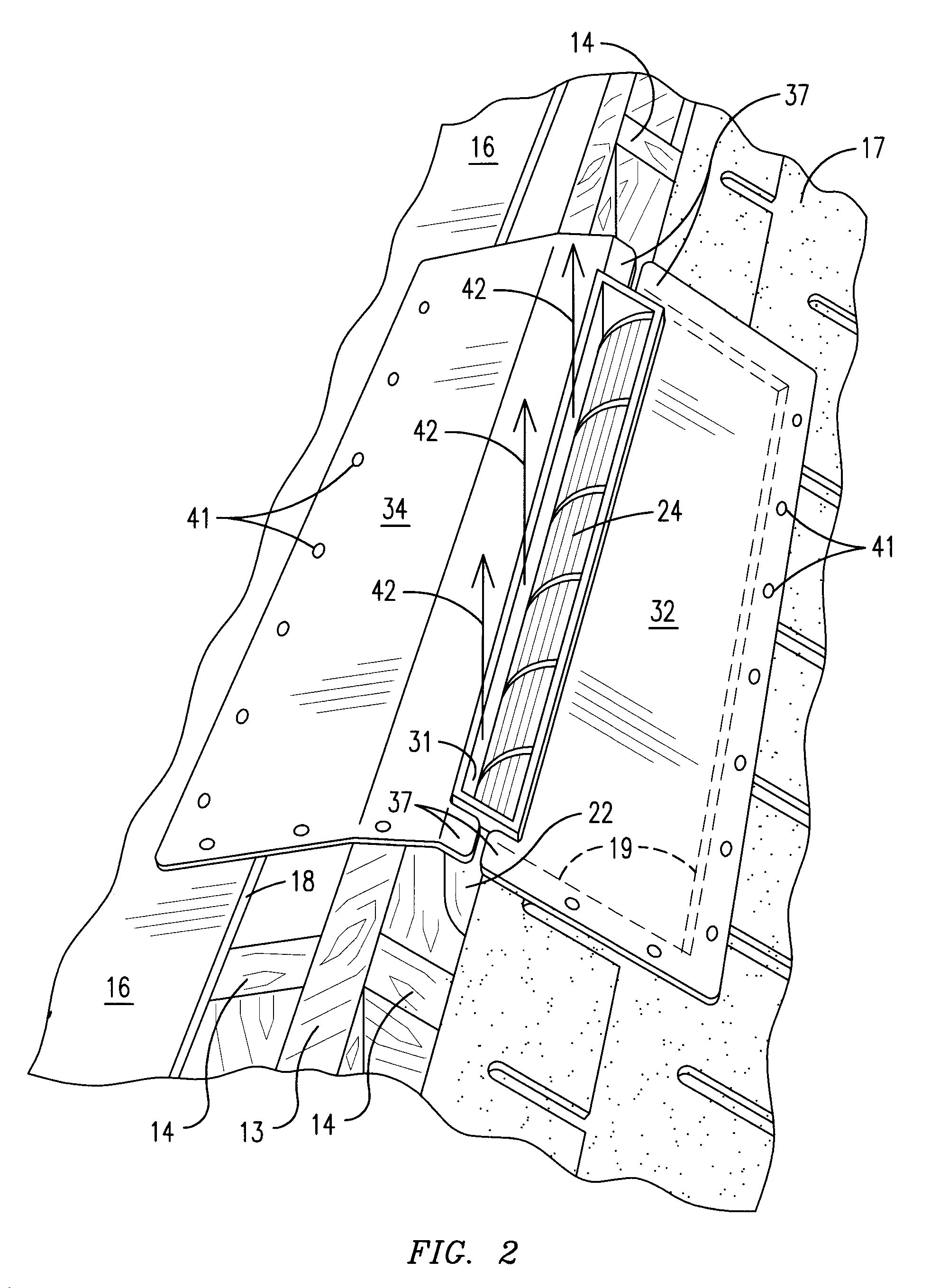Ridge Vent with Powered Forced Air Ventilation
a forced air ventilation and ridge vent technology, applied in ventilation systems, lighting and heating apparatuses, heating types, etc., can solve the problems of insufficient attic humidity, inability to drive robust ventilation, and inability to meet the needs of attic ventilation, so as to achieve the effect of improving ventilation
- Summary
- Abstract
- Description
- Claims
- Application Information
AI Technical Summary
Benefits of technology
Problems solved by technology
Method used
Image
Examples
Embodiment Construction
Referring now in more detail to the drawing figures, wherein like reference numerals designate like parts throughout the several views, FIG. 1 illustrates an embodiment of a blower and its installation along a roof ridge. The roof 11 overlies and bounds an attic space 10 of a dwelling or other structure. The roof 11 is of the gable design having a roof ridge 12 along which a wooden ridge beam 13 extends. A plurality of roof rafters 14 are secured to the ridge beam 13 and extend downwardly at an angle on either side of the ridge. The roof rafters typically are spaced apart 16 inches on center, but may have a different spacing such as, for instance, 24 inches on center. The rafters 14 support a roof deck 16 upon which underlayment and shingles 17 are secured.
The roof 11 in FIG. 1 is prepared for installation of ridge vents along the ridge 12 of the roof. More specifically, a ridge slot 18 has been cut in the roof deck on either side of the ridge beam 13 through which air within the at...
PUM
 Login to View More
Login to View More Abstract
Description
Claims
Application Information
 Login to View More
Login to View More - R&D
- Intellectual Property
- Life Sciences
- Materials
- Tech Scout
- Unparalleled Data Quality
- Higher Quality Content
- 60% Fewer Hallucinations
Browse by: Latest US Patents, China's latest patents, Technical Efficacy Thesaurus, Application Domain, Technology Topic, Popular Technical Reports.
© 2025 PatSnap. All rights reserved.Legal|Privacy policy|Modern Slavery Act Transparency Statement|Sitemap|About US| Contact US: help@patsnap.com



